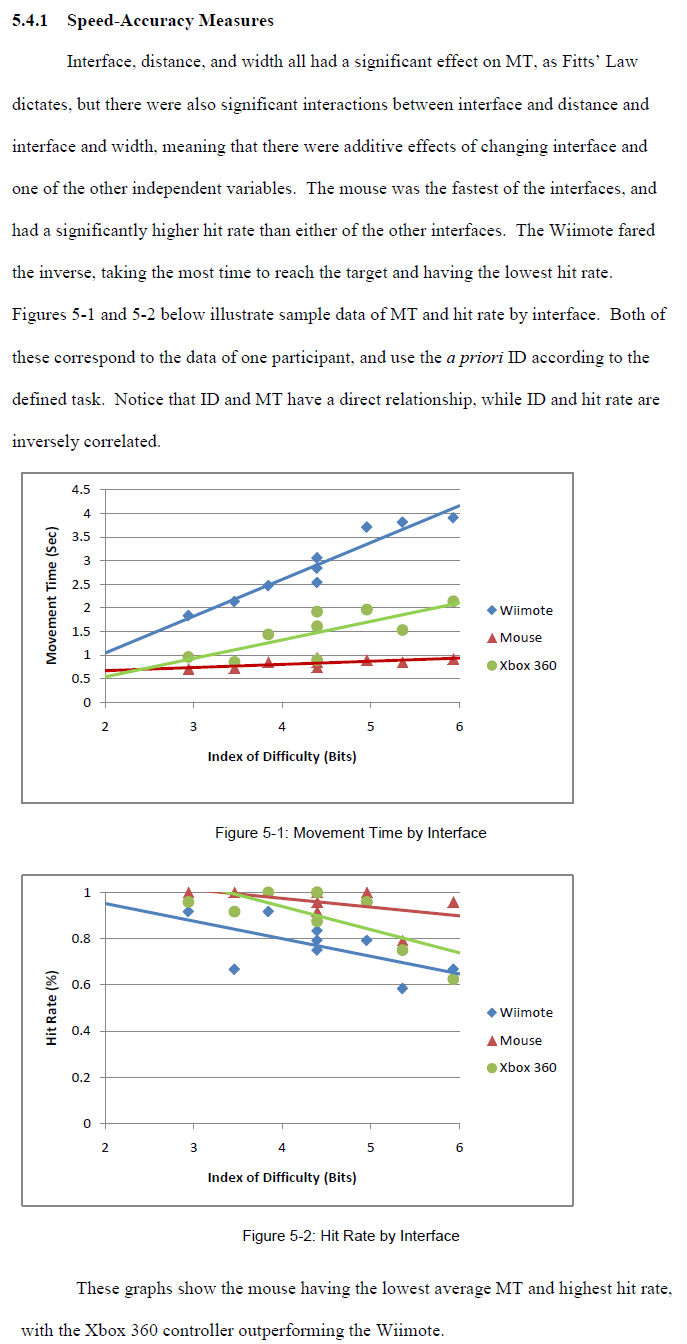The goal of this research is to test the effect of different computer interfaces on the amount of time it takes a user to move a cursor from a start point to a target, using Fitts' Law, a model that describes the performance of pointing of input devices. Participants in a study used a mouse, Xbox 360 controller, and Nintendo Wii remote to point at and select target regions. The goal is to see the effects of interface, distance to the target, and target width on movement time, information throughput, and hit rate. Additional path metrics and the speed-accuracy tradeoff will be covered.
6.1.1 Interface Performance
Based on the data collected in this study, it is quite apparent that the mouse is the most efficient interface in terms of both speed and accuracy. It was consistently the best in terms of MT, hit rate, ID, and TP. The Xbox 360 controller operated significantly worse than the mouse, but still did much better than the Wiimote in all of these metrics. Also, the slope of the lines in Figure 5-1 indicate that the mouse has the lowest interface speed constant (b in the Fitts' Law formula described by Equation 2-6), with Wiimote having the highest constant. This means that as ID gets higher, the MT of the Wiimote would continue to grow at a higher rate than the mouse, with the Xbox 360 controller growing at a rate in between the two. The Xbox 360 controller fared significantly better than the other interfaces in terms of path metrics, with the mouse outperforming the Wiimote. This indicates that the Xbox 360 controller has a smoother movement target-selection trail, and that it may excel in terms of more precise tasks. The Wiimote metrics indicate that it is a poor choice of interface to use for accuracy tasks.














